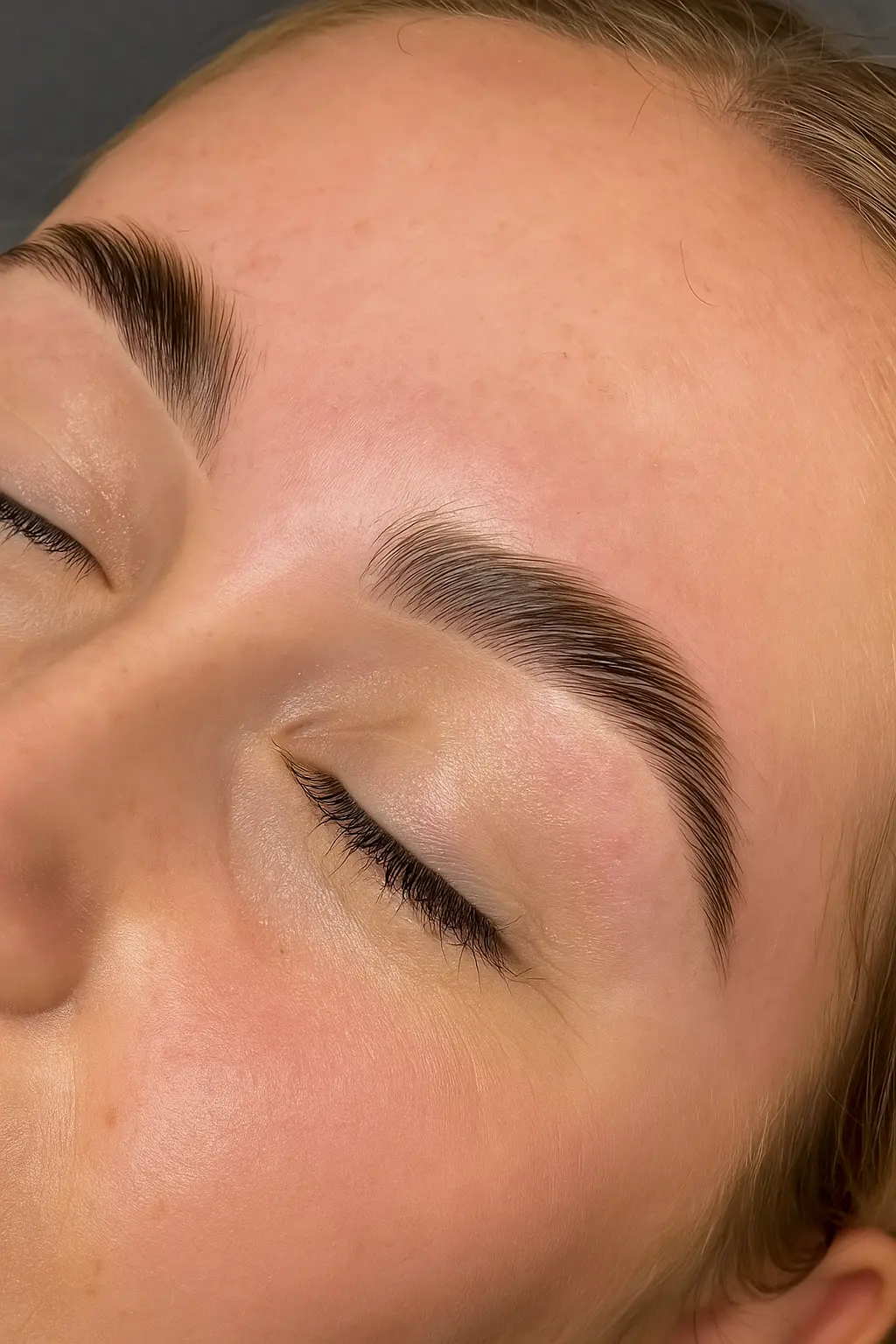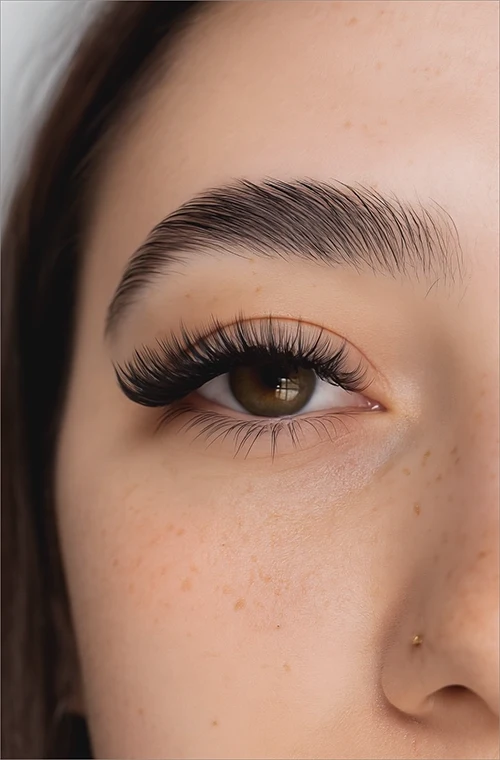Request an appointment
Opening hours
Business days
08:30-22:00
Saturday
08:30-20:00
Sunday
08:30-20:00
FAQs
Brow Lamination / Brow Lift
- What is brow lamination?
- Does Brow Lamination make your brows thicker ?
- How long does the brow lamination process take?
- Is brow lamination painful?
- Can I choose the shape of my brows?
- How should I prepare for a brow lamination appointment?
- Do different skin types react differently to brow lamination?
- How long does brow lamination last?
- What are the aftercare instructions for Brow Lamination ?
- Are there any contraindications for brow lamination?
- Will my brow hairs be damaged?
- Can I still fill in my brows with makeup after lamination?
- How long does brow lamination last?
- Can I get my brows wet after lamination?
- What if I experience irritation or redness after the procedure?
- When can I have a brow lamination again?
- Who should avoid brow lamination ?
Brow lamination is a cosmetic treatment that involves restructuring brow hairs to keep them in a desired shape, offering a fuller, more defined look. It’s like a perm for your eyebrows.
Brow Lamination doesn’t make your brows thicker, it gives the illusion of thicker, fuller, bolder brows.
The process typically takes about 45 minutes to an hour to complete, depending on your eyebrow thickness and the desired effect.
Brow lamination is a non-invasive, typically pain-free process. You may feel a slight discomfort or tingling from the chemical solution, but it should not be painful.
Yes, before the treatment, you will have a consultation to discuss the best shape that suits your face and your personal preference.
Avoid using retinol or exfoliating creams near your eyebrows at least 72 hours before the appointment. It’s also best to come in with clean skin free of makeup.
Brow Lamination is great for all skin types! Oilier skinned clients may see a slight decrease in shelf life due to the excess oil production in the skin.
Brow lamination lasts up to 8 weeks if proper care is taken during the 24 hours post procedure. Premature exposure to water, sweat, and/or steam can prevent the hairs from processing correctly. The growth cycle of eyebrow hair is typically 3 months. Once the brow hairs have completed their growth cycle, to ensure the integrity of the hair is well kept, receiving the treatment every 2-3 months is recommended.
- Do not wet your brows for 24-48 hours
- Avoid touching the brow area to the risk of transferring oils
- Do not apply makeup to the brows for 24-hours post-treatment
- Do not apply AHA or exfoliate the brow area for 72-hours before or after the treatment
- Do not use any self-tanning products on the face for at least 48-hours post-treatment
- Comb the hairs into place each day
Those with skin conditions like eczema, psoriasis, or a history of hair loss may not be suitable candidates. Pregnant or breastfeeding women should consult their doctor first.
When performed by a trained professional, the risk of damage is minimal. However, the chemical solution can be drying, so proper aftercare is essential.
Yes, you can still use brow makeup to fill in any sparse areas or to further define your brows, but you may find you need less product than before.
Brow lamination results typically last between 4 to 6 weeks, depending on your hair growth cycle and how you care for your brows post-treatment.
You should avoid getting your brows wet for at least 24 hours after the treatment to ensure the lamination sets properly.
Mild irritation or redness can be normal immediately after the treatment. However, if it persists, contact your salon. For significant reactions, seek medical advice.
It’s generally recommended to wait until your brows have fully gone through their natural growth cycle before repeating the process, usually around 6 weeks.
-
People with Skin Conditions: Individuals with eczema, psoriasis, or any other skin conditions around the eyebrow area should avoid brow lamination. The chemicals used in the process can irritate sensitive skin.
- Those with Eye Infections: If you have an active eye infection like conjunctivitis or blepharitis, it’s best to postpone the treatment until the infection has completely healed.
- Pregnant or Breastfeeding Women: Due to the lack of studies on the effects of the chemicals used in brow lamination on pregnant or breastfeeding women, it’s often recommended to avoid this treatment during these periods.
- People with Allergies to Cosmetics: If you have a history of allergies or reactions to cosmetic products, particularly those used in eyebrow treatments, brow lamination might not be safe for you.
- Individuals with Very Thin or Fragile Eyebrows: The chemicals and process of brow lamination can be too harsh for those with extremely thin or fragile brows, potentially leading to damage or hair loss.
- Recent Eye Surgery Patients: If you’ve recently had eye surgery, including LASIK or cataract surgery, consult with your doctor before considering brow lamination.
- People Undergoing Chemotherapy: Chemotherapy can make skin more sensitive and prone to irritation, so it’s best to avoid brow lamination during this time.
-
Those with a History of Chronic Eye Irritation: If you frequently experience eye irritation or have sensitive eyes, the chemicals used in brow lamination could exacerbate these issues.
About
At Lash Up, we transform the look with expert services in lash extensions, lash lift, brow lift, and personalized eye care. Driven by a passionate and experienced team, our mission is to deliver premium beauty services in a refined, clean, and welcoming environment. Every gaze has its own story — we help yours shine through with elegance and precision.
About
At Lash Up, we transform the look with expert services in lash extensions, lash lift, brow lift, and personalized eye care. Driven by a passionate and experienced team, our mission is to deliver premium beauty services in a refined, clean, and welcoming environment. Every gaze has its own story — we help yours shine through with elegance and precision.
© 2025 Lash Up, All Rights Reserved
© 2025 Lash Up, All Rights Reserved













